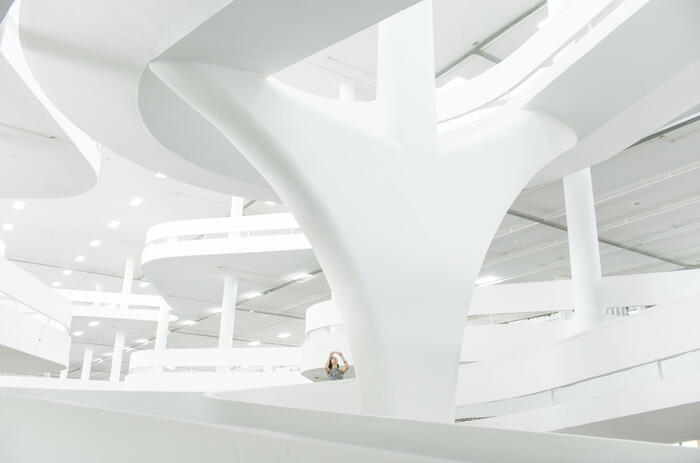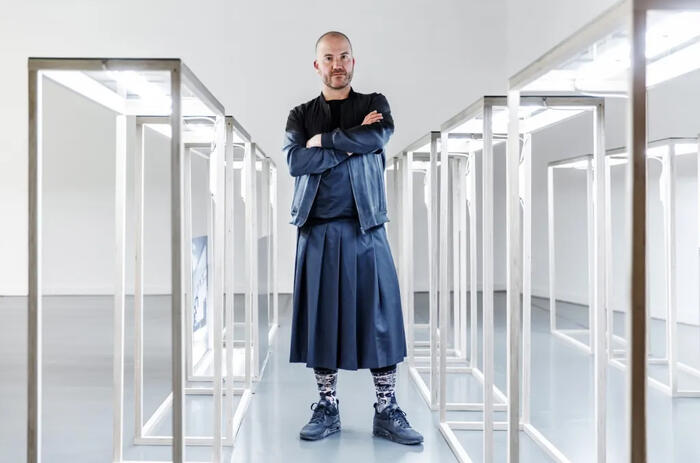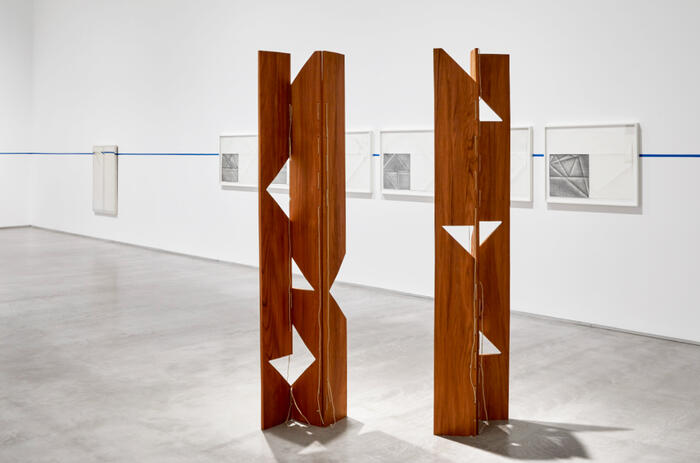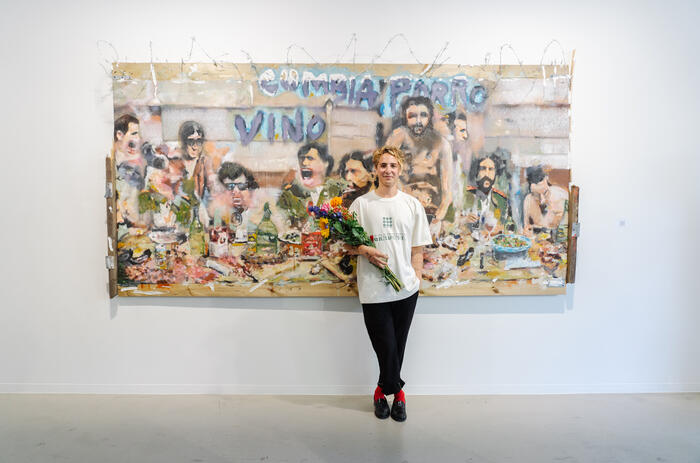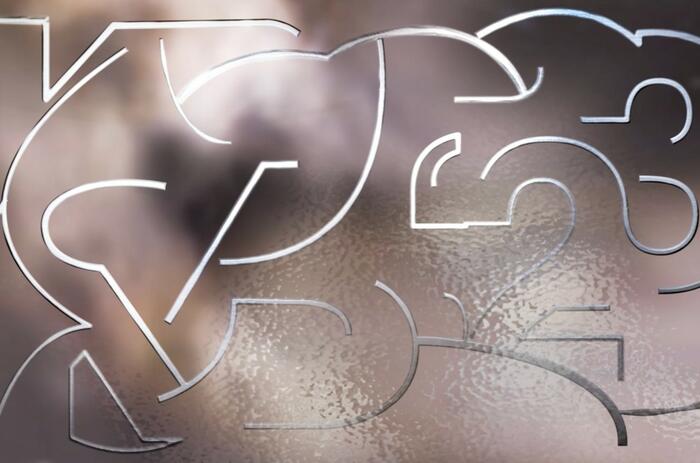ART AS ENIGMA AND A NON-NORMATIVE SPACE. INTERVIEW WITH MANUEL BORJA-VILLEL
Manuel Borja-Villel, a Spanish art historian and former director of the Reina Sofia for the past 15 years, is going through a special moment personally and professionally with a new challenge in his career.
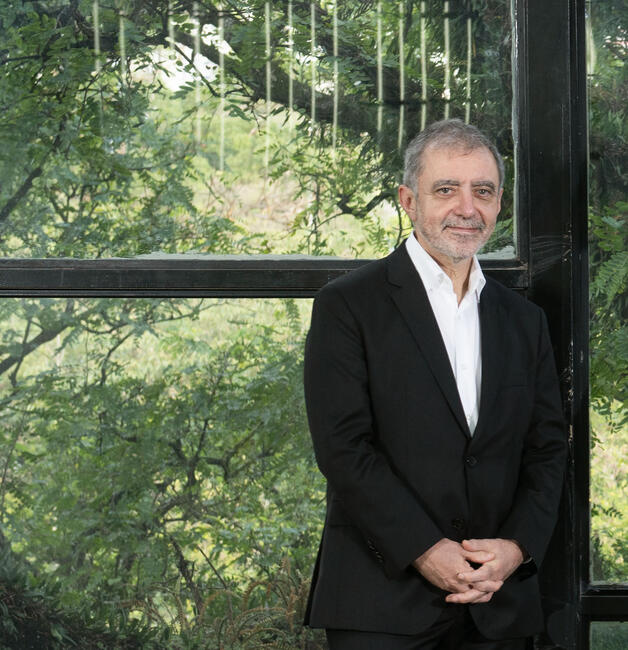
Borja-Villel is part of a team of four curators leading the São Paulo Biennial, which runs from September 6th to December 10th. In this conversation, he reflects and delves into his years at the helm of one of the largest museums and the philosophy behind his management. Lastly, he introduces us to the dance that gives rise to this year's Biennial theme: Choreographies of the Impossible.
What was the biggest challenge in keeping the Reina Sofia relevant and active for such an extended period of time?
There were many challenges, some inherent to the situation of the Reina when I arrived, others related to the cultural context of the country, and others more general. The first challenge we faced was primarily with Guernica. It is a work that is a great icon of the 20th century, reflecting the fact that artworks do not have just one life but many. It represents the Republic, the role of the artist during the rise of fascism, the Spanish exile, those without land, those who want to write a history without a territory.
What struck me was that it was isolated. It was a work that had so many lives, intertwined with so many stories. What we did was rehistoricize Guernica. We placed Guernica alongside the Republic Pavilion to indicate its physical location. From there, we created a structure that, in a way, clashed with a certain structure that existed in the Reina, where each artist - generally men - had their own room or two, where the collection was a succession of proper names, one after another, out of context, with no collectives, no tensions... That was the first exercise we immediately undertook, and it was a very important challenge in terms of heritage.
Another challenge had to do with the internal structure of the museum. We changed the museum's laws to give it more autonomy. Externally, we sought to be part of a network structure, what we called "Situated Museum." A structure that has to do with the common, with another way of building a collection, another way of understanding. Internally, we created a center for studies that essentially aimed to rethink another way of knowing, learning, and experiencing other types of knowledge.
Why do you think it is important for an institution to be able to engage in this process of rethinking itself, and how can it be done?
It is always rethought. It's like the idea that all art is political, it's just that some say it and others don't. Those who claim they don't rethink are lying because an institution is a machine, an apparatus that keeps changing, with its own life and dynamics. The act of rethinking is to be critical of your own terms, of the place you occupy at a given moment.
Rethinking is fundamental for two reasons. One is institutional and political. As a public service, you have an obligation to reflect on your own mechanisms, whom you serve, what your function is, and why. That is, in fact, what artists do—they question the way art is made. In an era of cultural wars, where the far right considers culture as a means to gain power, and at a time when there are fake news and our words lose their meaning, I believe that institutions and artists make us see reality as something different every time. They are more important than ever because they are spaces to learn what we don't know, to understand that we only learn with others, to understand that the museum, cultural institutions, must be places of freedom and creation; otherwise, we are truly limiting ourselves.
On the other hand, there is an artistic reason. Artists work with enigmatic objects: artworks. They are like enigmas, questions that answer you with another question. An enigma that you know you will never fully understand, but it still attracts you. This questioning with another question, which is the artwork, is the opposite of the pressures that institutions face, where we are pushed to learn what we already know, to relearn when what matters is learning what we didn't even know we didn't know, what is completely unknown. And that can only be done through constant questioning, through a certain externalization.
What is the main thing you take away from all these years as the director of the Reina Sofia?
On an emotional level, it's an extraordinary team. Also, despite accusations of elitism, the reception from the public is something significant that stays with me. During the pandemic, the museum lost tourists, but something interesting happened: many locals started visiting. Moreover, many of these people came and spent hours, truly eager to have this experience, a collective experience of being together with others. That impact, the relationship, and the significant reception from the audiences are things that emotionally stick with me.
On a more intellectual level, beyond the connection, beyond the structural changes in the museum, beyond the 200+ exhibitions that have meant continuous learning, the reflection is that from a large institution representing the State, it is possible to pursue different cultural policies, to work with different types of institutions that break this homogenization where one only works with equals. It is this rupture that has allowed the creation of a center for studies, the establishment of the Institute of Radical Imagination, the association with the network of conceptualisms, the creation of the "situated museum," and collaborations with spaces that generate non-normative, open spaces that allow us to learn about what we didn't know we didn't know. To learn not only content but also relationships.
This connects us with the Biennial. The exhibition is called "Choreographies of the Impossible." Choreography literally means "writing in space."
The Greeks had two concepts, an Aristotelian one, which was the idea of space: topos, a fixed, static place, where you can move within that topos, that place. This is a false freedom because you can only move as long as, for example, if you are male, you don't become female, in which case you would be either male or female. But there isn't a fluid thing that exists in other cultures.
In contrast, "cora" implies that you invent your own space as you walk, as you move your body. There is no dictatorship of a static structure. And choreography, the search for new spaces, is how we were creating exhibitions, working with artists, collectives, social movements. This is what I take away on an institutional level.
At what point in your life (projects, aspirations, goals) does the São Paulo Biennial find you?
They chose me and my colleagues a year ago, and it was a reflection I had been engaging in. Beyond the title we talked about, an element that I believe is very important in this biennial is that it is absolutely a horizontal group. I was used to a vertical structure, even though the team is extraordinary, like a family, there was a final cut, the museum began and ended with the director. Here it is absolutely horizontal, and that horizontality implies an exercise of negotiation, of understanding culture not only as representation but as a meeting place. It is a continuous exercise in humility. Seeing how we use similar terms and knowledge from different perspectives. And that continuous negotiation, that understanding that we might like the same artist but for different, sometimes antagonistic reasons, is very important and has little to do with a romantic view of the collective. We haven't worked together before, and I don't know if we will work together in the future. It is a way of working without hierarchies, where there is a constant choreography based on each person's terms and ideas.
On the other hand, it implies understanding that modernity has its own vocabulary, its own topos, that fixed place. Personally, it is very important for me to break these boundaries. To change from this position in one of the major Western institutions and come to another and speak from a different position.
-
Curatorial collective of the 35th Bienal de São Paulo, from left to right: Manuel Borja-Villel, Diane Lima, Grada Kilomba and Hélio Menezes © Levi Fanan / Fundação Bienal de São Paulo.
How did the horizontal structure of the team influence the curatorial outcome of the Biennial?
I would say it's not four separate exhibitions, it's one where each person has contributed their forms, their elements of knowledge.
Firstly, the São Paulo Biennial has always had a historical element, with references to historical figures. Here, there will also be these genealogies, but they will be somewhat surprising. Some unexpected, others as historical figures with a new interpretation. There will be elements that apparently have no connection, but they will be together. And these tensions, which in a way is how we have worked as a team, will be reflected. It generates a reflection on the diaspora, implies a reflection on territory, on those who have no history or whose history has been subjugated. It also implies the role of feminisms. This will be present but with genealogies that will not be literal but poetic, where an element will be not as an answer but as a question. It will be an enigma, a question, a choreography.
How did the inspiration for this year's Biennial theme come about? What was the creative process like?
The concept comes from a desire to create and break binary structures: objective/subject, north/south, male/female, etc. And to try to generate choreographies, spaces, and a time that is not linear. It arose very spontaneously from these conversations where each person had a different point of view and background.
There are two elements: the desire to learn something unknown with others and the understanding that all knowledge is situated because each person starts from their own history, their own limitations.
-
Weavers of Time, 2013
Oil on Canvas, Resin, Wood, Tatting laces
Painting 228x190.5cm
Sculpture 122x183x122cm
Collection of Arario Museum in Space, Seoul, Korea
-
Weavers of Time, 2013
Oil on Canvas, Resin, Wood, Tatting laces
Painting 228x190.5cm
Sculpture 122x183x122cm
Collection of Arario Museum in Space, Seoul, Korea
Is there any artistic project or artist that you find interesting to highlight?
There are many, and in the Biennial, none are superfluous or lacking, they are all equally important. It's difficult for me to focus on just one. Due to a circumstantial fact, I can highlight Brouwn, an artist born in Suriname who lived his entire life in the Netherlands, as I just worked yesterday afternoon on the distribution of his works in the space.
Brouwn understood the world as a place where you measure your relationship with others through a kind of poem. He had a way of understanding the artwork not as a closed element but as a relationship. He is an Afro-descendant artist in Europe, whose culture has a certain element of invisibility that he manifests by not reproducing his work, by not appearing in certain places. But he also speaks of the impossibility of reducing oneself to an icon, to an image. Hence, the artwork is not reduced to an image; it is always relational, a cyclical element that is in motion.
Is there any parallel project that you consider relevant happening during those dates?
The Biennial will have the exhibition, with more than 100 artists, which will be quite powerful. It is a performative Biennial that makes people move. The public programs will have various moments, so it's worth taking a look.

